Movement and change: surveying the dense utopian architecture of Cedric Price
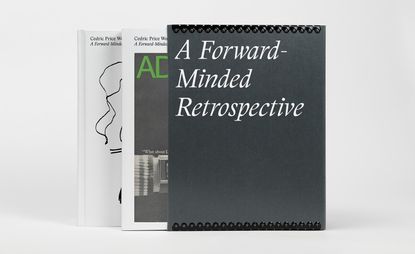
Cedric Price is one of the unsung greats of British architecture, a theorist and thinker who was both practically minded and wedded to grand utopian visions. Price believed that architecture must exist within a social and technological narrative, creating community spaces that could change and shift depending on how they were needed. He was truly ahead of his time, most notably with the 1961 'Fun Palace' concept, an unbuilt vision for a giant shed-like house of culture that would subsequently influence Richard Rogers' and Renzo Piano's design for the Pompidou Centre in Paris.
This massive new monograph bring together the entire Price archive, with drawings, photographs, printed ephemera, histories and anecdotes of his often eccentric approach to architectural practice, his retinue of devoted clients and his many writings on the built environment. Price's dense, layered approach would probably be lost among today's cacophony of conceptual work, empty theorising and shallow research. Even so, for all his graphic, architectural, technical and political skills, Price rarely found that his approach intersected with the commercial desires of the day.
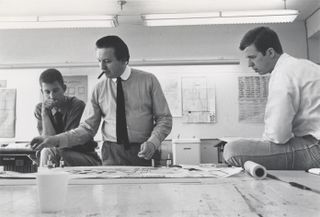
Price leads a team of students working on a design project at The Rice Design Fete, Rice University, Texas, 1967. Courtesy Cedric Price Estate
One project that did make the grade was the InterAction Centre in Kentish Town, begun in 1971 as an agglomeration of temporary structures, and added to and altered during the decade. It's a clear precursor of the contemporary 'Boxpark' approach, and Price spent considerable amounts of time developing ideas for urban 'magnets' that would animate and engage communities. Ultimately, InterAction lasted two decades longer than it was supposed to, thanks to local authority inertia and lack of funds. Price, ever the contrarian, supported its demolition in the face of conservationists keen to retain this snapshot of 1970s DIY/proto-high-tech/community architecture.
Price didn't do preservation. His was an architecture of movement and change. For every micro-scale project – a facade renovation, hotel bar or shop fit out – there were epic attempts at reinvigorating whole regions like the 'Potteries Thinkbelt', a late 60s scheme that envisioned former collieries as a nexus for a vast higher education complex, linked to existing transport infrastructure. His most famous surviving building is the Snowdon Aviary at London Zoo, a vast tented structure designed with engineer Frank Newby and opened in 1965 (shortly to be refurbished by Foster + Partners).
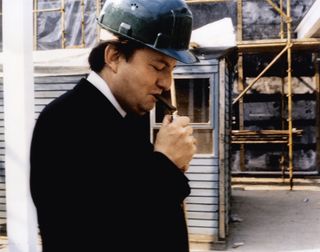
Price on-site
For the most part, Price’s work survives in his drawings, writing and thoughts. Although Price himself might have had a word or two to say about such a large, permanent memorial to a career spent celebrating the transitory and the ephemeral, Samantha Hardingham's wonderful book is a true labour of love and very highly recommended, an expansive social and graphic history of a period of social change and utopian thinking.

From left, Frank Newby, Lord Snowdon and Price at the opening of the New Aviary at London Zoo, 1965
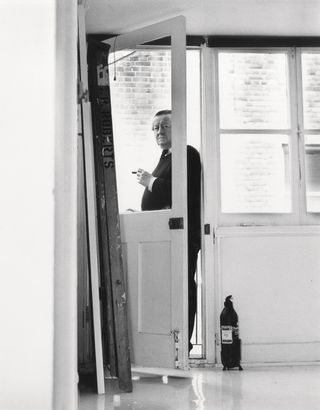
Price in the White Room of his offices in Alfred Place, Bloomsbury, c.1995

This new monograph bring together the entire Price archive, with drawings, photographs, printed ephemera, histories and anecdotes of his often eccentric approach to architectural practice
INFORMATION
Cedric Price Works 1952–2003, £150, published by Architectural Association, CCA. For more information, visit the website
Wallpaper* Newsletter
Receive our daily digest of inspiration, escapism and design stories from around the world direct to your inbox
Jonathan Bell has written for Wallpaper* magazine since 1999, covering everything from architecture and transport design to books, tech and graphic design. He is now the magazine’s Transport and Technology Editor. Jonathan has written and edited 15 books, including Concept Car Design, 21st Century House, and The New Modern House. He is also the host of Wallpaper’s first podcast.
-
 The visual feast of the Sony World Photography Awards 2024 is revealed
The visual feast of the Sony World Photography Awards 2024 is revealedThe Sony World Photography Awards 2024 winners have been revealed – we celebrate the Architecture & Design category’s visual artists
By Ellie Stathaki Published
-
 Don’t Move, Improve 2024: London’s bold, bright and boutique home renovations
Don’t Move, Improve 2024: London’s bold, bright and boutique home renovationsDon’t Move, Improve 2024 reveals its shortlist, with 16 home designs competing for the top spot, to be announced in May
By Ellie Stathaki Published
-
 Perfumer H has bottled the scent of dandelions blowing in the wind
Perfumer H has bottled the scent of dandelions blowing in the windPerfumer H has debuted a new fragrance for spring, called Dandelion. Lyn Harris tells Wallpaper* about the process of its creation
By Hannah Tindle Published
-
 Don’t Move, Improve 2024: London’s bold, bright and boutique home renovations
Don’t Move, Improve 2024: London’s bold, bright and boutique home renovationsDon’t Move, Improve 2024 reveals its shortlist, with 16 home designs competing for the top spot, to be announced in May
By Ellie Stathaki Published
-
 Marcio Kogan’s Studio MK27 celebrated in this new monograph from Rizzoli
Marcio Kogan’s Studio MK27 celebrated in this new monograph from Rizzoli‘The Architecture of Studio MK27. Lights, camera, action’ is a richly illustrated journey through the evolution of this famed Brazilian architecture studio
By Jonathan Bell Published
-
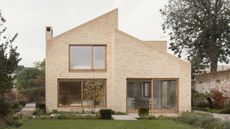 Timber-framed Wimbledon house is a minimalist, low-energy affair
Timber-framed Wimbledon house is a minimalist, low-energy affairA new timber-framed Wimbledon house is designed to blend into its traditional surroundings with a neat brick façade, careful massing and pared back interiors
By Jonathan Bell Published
-
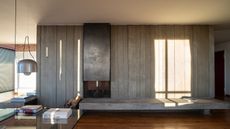 ‘Interior sculptor’ Christophe Gevers’ oeuvre is celebrated in new book
‘Interior sculptor’ Christophe Gevers’ oeuvre is celebrated in new book‘Christophe Gevers’ is a sleek monograph dedicated to the Belgian's life work as an interior architect, designer, sculptor and inventor, with unseen photography by Jean-Pierre Gabriel
By Tianna Williams Published
-
 London Science Museum’s Energy Revolution gallery champions sustainable exhibition design
London Science Museum’s Energy Revolution gallery champions sustainable exhibition designThe Energy Revolution gallery opens at London’s Science Museum, exploring decarbonisation through sustainable exhibition design by Unknown Works
By Ellie Stathaki Published
-
 This South Downs house stands as a testament to the value of quiet refinement
This South Downs house stands as a testament to the value of quiet refinementAt one with the landscape, a South Downs house uses elements of quintessential country villas and midcentury gems with modern technologies
By Jonathan Bell Published
-
 Ash Tree House offers a contextual approach to a north London site
Ash Tree House offers a contextual approach to a north London siteAsh Tree House by Edgley Design is a modern family home in a north London conservation area's backyard site
By Ellie Stathaki Published
-
 In memoriam: John Miller (1930-2024)
In memoriam: John Miller (1930-2024)We remember John Miller, an accomplished British architect and educator who advocated a quiet but rigorous modernism
By Jonathan Bell Published